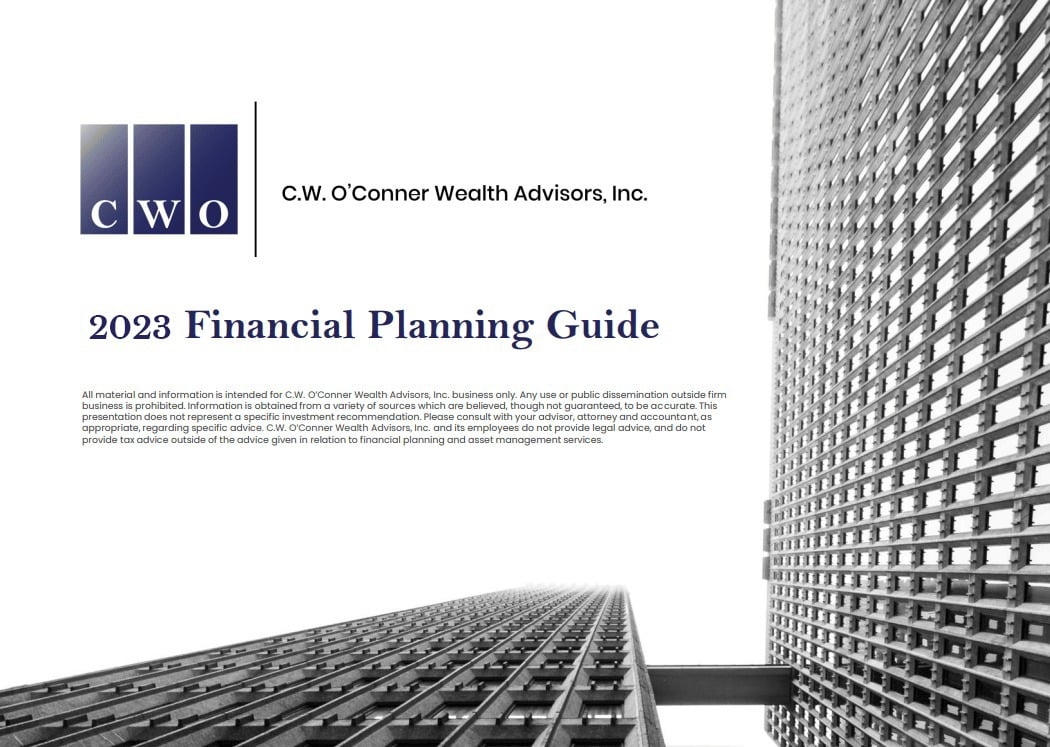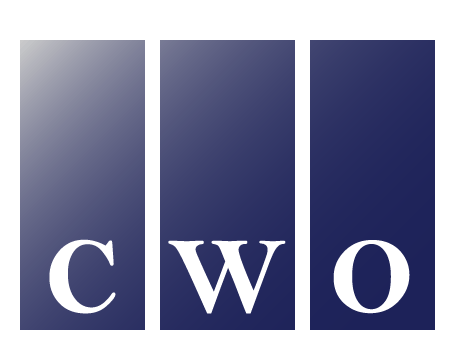
For some investors, the traditional asset categories of stocks, bonds, and cash equivalents aren’t enough to ensure a well-diversified portfolio. When this occurs, individuals may want to consider turning to alternative assets in the private market space.
These are investments that don’t fall into one of the three traditional asset categories. Some of the most common alternative assets are private equity, private debt, private real estate, and hedge funds.
For the most part, private market funds have been regulated much less than assets in the public market. That’s because high-net-worth investors are considered to be better equipped to sustain potential losses than average investors.
It’s important to investigate the various types of alternative assets available to you as an investor. Below, you will be walked through the ins and outs of one of the most popular options – private equity.
What is Private Equity?
As the name implies, private equity is an ownership stake in a company that is privately held. This is in contrast to public equity, which is an ownership stake in a company that is traded on one of the public stock exchanges, like the New York Stock Exchange or the Nasdaq Composite.
Private equity firms create private equity funds by forming a limited partnership. Investors in the fund become Limited Partners by contributing money to a pool that’s used to invest in private companies that meet the fund’s investment strategy. The private equity firm is the General Partner and assumes responsibility for managing the fund’s investments, performance reporting (usually on a quarterly basis), and operational tasks of running the fund.
Private equity funds are illiquid investment vehicles that contain privately held companies. They require long capital lockups (typically 8 to 12 years or longer) and are not marked to market each day. Private equity fund sub-asset classes include:
- Leverage Buyout (LBO)
- Growth Equity (GE)
- Venture Capital (VC)
- Distressed/Special Situations
Table of Contents
- 1 Private Equity vs Investment Banking
- 2 Private Equity vs Public Equity
- 3 Private Equity vs Private Debt
- 4 Pros and Cons of Private Equity: What Are The Pros?
- 5 Pros and Cons of Private Equity: What Are The Cons?
- 6 How to Get into Private Equity Investing
- 7 How C.W. O’Conner Helps with Private Equity Investing
- 8 Download our 2023 Financial Planning Guide
Private Equity vs Investment Banking
Private equity and investment banking both operate within the financial sector, but they have distinct functions and objectives. Unlike private equity, investment banking primarily serves as a financial intermediary.
Investment banking assists companies in raising capital by issuing debt or equity, advises on mergers and acquisitions, and plays a central role in the IPO process. Instead of making direct long-term investments like private equity firms, investment banks earn their revenues through fees and commissions from facilitating and advising on these financial transactions.
In essence, while both are entrenched in the world of finance, private equity is about direct, long-term investment in companies to increase their value, whereas investment banking is more transactional, focusing on helping companies navigate the financial markets without maintaining a lasting stake in them.
Private Equity vs Public Equity
Understanding the distinction between private equity and public equity is fundamental for investors seeking to diversify their portfolios and optimize potential returns. Both forms of equity represent an ownership stake in a company, yet their structural differences, accessibility, and inherent risks and rewards vary substantially.
Definition and Nature of Investment
Private Equity: As previously mentioned, private equity entails investing in companies that are not listed on public stock exchanges. The investments are typically channeled through private equity funds, which are managed by private equity firms. These funds invest in privately held companies with the aim of achieving long-term capital appreciation. The general approach in private equity is to have an active role in the management, growth, or restructuring of the companies they invest in.
Public Equity: Public equity refers to shares of a company that are openly traded on stock exchanges such as the New York Stock Exchange and NASDAQ. Investors, ranging from institutional to retail, can buy or sell these shares through these exchanges. The value of public equities is determined by market forces, with prices fluctuating based on supply, demand, and public perception of the company’s performance and potential.
Liquidity
Private Equity: Investments in private equity are inherently illiquid. Investors typically commit their capital for extended periods (again usually between 8 to 12 years). Exiting these investments before the predetermined time frame can be challenging and may attract penalties.
Public Equity: Public equities offer high liquidity. Investors can easily buy or sell shares through stock exchanges, making it possible to enter or exit positions based on market dynamics or personal financial needs.
Regulatory Environment
Private Equity: The private equity space generally experiences less regulatory scrutiny compared to public markets. This can offer flexibility in operational and investment decisions. However, it also implies a higher reliance on the due diligence capabilities of the private equity firm.
Public Equity: Companies listed on public stock exchanges are subject to extensive regulatory oversight. They are mandated to disclose financial statements, business operations, and other pertinent information periodically. These measures help ensure transparency for investors.
Returns and Risk Profile
Private Equity: Historically, private equity has offered attractive risk-adjusted returns, outperforming public equities in several instances. The active involvement of private equity firms in the companies they invest in can lead to value creation and higher growth. That said, these investments come with a unique set of risks, including company-specific challenges.
Public Equity: While the returns from public equities can be robust, they can also be more volatile, given the continuous price fluctuations in the stock market. The risk profile depends on various factors. These include, but are necessarily limited to, the nature of the company, industry dynamics, and macroeconomic factors.
Accessibility and Capital Requirements
Private Equity: Private equity investments often come with high minimum capital requirements. As a result, high-net-worth individuals like accredited investors or qualified purchasers may be the only ones with access in certain cases.
Public Equity: Public equities are accessible to a broader range of investors, from retail to institutional. Often, there’s no significant minimum capital requirement, allowing smaller investors to participate.
Private Equity vs Private Debt
Within the realm of alternative investments, both private equity and private debt have gained significant traction among sophisticated and seasoned investors. While both of these investments are rooted in the private market space, their nature, risks, and potential for returns are distinct. It’s important to take these distinctions into consideration before getting involved with either.
Definition and Nature of Investment
Private Equity: Again, private equity involves acquiring an ownership stake in companies that are not publicly traded. Investments may span various stages, from early-stage venture capital to mature companies through leveraged buyouts. The primary objective is a long-term appreciation of invested assets.
Private Debt: Private debt refers to debt instruments and loans that are not publicly issued or traded. These might include direct lending to mid-market companies, mezzanine debt (a hybrid of debt and equity), distressed debt, or other structured finance products. Here, the main objective is to earn regular interest income, alongside potential capital gains in some structured scenarios.
Liquidity
Private Equity: Remember, investments in private equity are characteristically illiquid. They often require investors to commit capital for long durations often around a decade.
Private Debt: While private debt is also illiquid relative to traditional bonds or equities, its maturity periods are often shorter than private equity investments, providing a somewhat quicker return of capital.
Risk and Return Profile
Private Equity: Given its equity nature, private equity carries higher risk as it sits at the bottom of a company’s capital structure. If a company faces financial distress, equity holders are last in line. However, with this risk comes the potential for higher returns, especially if the company grows or improves its profitability.
Private Debt: Being a creditor, private debt investors rank higher in the capital structure than equity investors. This means in case of a default or liquidation, debt holders are prioritized. While this provides a layer of safety, the returns, which mainly come from interest payments, might be more predictable but are generally lower than potential private equity returns.
Income and Capital Appreciation
Private Equity: Returns are primarily derived from capital appreciation, i.e., the increase in the value of the investment over time. Dividend payouts might also be a source of income, especially in mature, cash-generating companies.
Private Debt: The primary source of returns is the interest income earned on the loaned amount. Some structured debt products, like mezzanine debt, might also have an equity component (e.g., warrants), providing an opportunity for capital appreciation.
Investor Control and Involvement
Private Equity: Given that private equity investments usually involve a significant or controlling stake, investors often play an active role in the management and strategy of the company.
Private Debt: Debt investors typically have less operational involvement in a company than equity holders. However, they might have covenants or conditions that the borrowing company needs to adhere to, providing a level of oversight.
Pros and Cons of Private Equity: What Are The Pros?
Private equity (PE) has increasingly become a pivotal force in the global financial sector, offering a distinct investment strategy compared to traditional public markets. The appeal of private equity lies in its potential to deliver superior returns, diversify investment portfolios, and contribute to business growth and innovation. Here are the key benefits of private equity:
Potential For Higher Returns: Historically, private equity investments have shown the potential for higher returns compared to traditional stock markets, especially over longer time horizons.
Capital Flexibility: PE firms can provide companies with the capital they need to expand, innovate, or restructure, all while focusing on long-term growth rather than short-term quarterly earnings.
Operational Expertise: Many PE firms bring not just capital, but also industry expertise, operational guidance, and valuable networks to their portfolio companies.
Strategic Alignment: Through active ownership, private equity firms can more closely align a company’s management with its strategic goals, leading to better operational focus and performance.
Portfolio Diversification: Investing in private equity offers an avenue for diversification beyond traditional equities and fixed income, which can be vital for portfolio risk management.
Potential for Value Creation: PE firms often drive value creation through strategic repositioning, operational improvements, acquisitions, and organic growth.
Long-Term Focus: Without the quarterly pressures of the public markets, PE-backed companies can often take a more long-term strategic view, allowing for better capital allocation and strategic growth initiatives.
Access to Untapped Markets: Private equity can unlock investment opportunities in emerging or underserved markets where public equity might not be as prevalent.
Governance and Oversight: Due to the significant stakes they hold, PE firms can exert greater governance and oversight over their portfolio companies, leading to improved business practices and accountability.
Risk Management: Private equity allows for more precise tailoring of investment structures and terms, which can be used to mitigate risks specific to an investment or market condition.
Talent Attraction and Retention: The involvement of a reputable PE firm can make a company more attractive to top-tier talent, given the potential for growth and lucrative exit strategies.
Innovation and R&D Investment: With a longer-term horizon and significant capital at their disposal, PE-backed companies might be more inclined to invest in research and development or pursue innovative strategies.
Enhanced ESG Focus: Many modern PE firms are focusing on Environmental, Social, and Governance (ESG) factors, driving portfolio companies to adopt sustainable and responsible business practices.
Facilitated Exits: Private equity can provide liquidity options for business owners, facilitating a smooth transition during buyouts or succession planning.
Why Private Equity Historically Outperforms
So why are private equity returns historically higher than other asset classes? One reason is that investors have access to a much larger pool of companies to invest in. There is a limited selection of public companies and these companies face heavy scrutiny by investment analysts. For example, there are about 200,000 companies in the U.S. with more than $10 million in annual revenue, compared to about 6,000 publicly traded companies this size.*
Private equity firms have access to this large pool of lesser-known companies that may present unique opportunities for high returns. These firms also have the resources to carefully study these companies to decide which meet their investment criteria. There does tend to be more risk in investing in lesser-known companies, but the potential rewards are higher.
Another factor is the active ownership role played by private equity firms in the companies they invest in. This may range from advising and assisting management to restructuring and running the company. The goal of private equity firms is to add value to each company they invest in.
Pros and Cons of Private Equity: What Are The Cons?
Over the years, private equity (PE) has seen impressive growth and delivered considerable returns to its investors. However, it’s essential to approach it with a balanced perspective. Along with its advantages, private equity comes with inherent challenges and limitations that stakeholders need to consider. Here are the key drawbacks of private equity:
Illiquidity: PE investments are not liquid. Investors cannot easily cash out their stakes as they might with publicly traded shares.
Lack of Accessibility: It is often the case that PE opportunities are only available to accredited investors and qualified purchasers. If you are looking to get involved as an individual, you will likely need a sizable net worth (north of a million dollars), or show a consistent track record of bringing in an annual income of $200,000 (or $300,000 with a spouse).
High Fees: PE firms can charge substantial management and performance fees. The commonplace “2 and 20” model (2% management fee and 20% of profits) can eat into net returns.
Long Investment Horizon: Investors in private equity funds usually commit their capital for extended periods, sometimes up to 10 years or more, potentially limiting their ability to pivot based on market conditions.
Leverage Risks: Many PE deals use a high degree of leverage (debt) to finance acquisitions. This can amplify potential losses and increase the risk of bankruptcy for portfolio companies.
Complexity and Lack of Transparency: The nature of PE investments can be complex, with limited transparency into the operations and finances of portfolio companies compared to publicly traded firms.
Potential for Value Destruction: While PE firms aim for value creation, there are instances where they might not realize expected synergies, or operational changes lead to diminished company value.
Reputational Risks: High-profile failures or perceived negative impacts on employees and communities can bring reputational damage to PE firms and their investors.
Alignment of Interests: There can sometimes be a misalignment between the PE firm’s interests and those of the portfolio company, especially concerning exit timelines and strategies.
Talent Retention Challenges: Post-acquisition changes and restructuring can lead to uncertainty, potentially causing valuable talent to leave the company.
Potential Overvaluation: In competitive deal environments, there’s a risk that PE firms might overpay for assets, impacting returns.
Regulatory and Compliance Risks: As the PE industry grows, it may face increasing regulatory scrutiny and compliance requirements, adding to operational complexities.
Operational Disruption: Significant changes imposed by a PE firm can disrupt ongoing operations, at least in the short term, affecting revenues and relationships.
Limited Diversification: Unlike broad-market equity funds, a single PE fund might have investments in a limited number of companies, reducing the benefits of diversification.
How to Get into Private Equity Investing
For many accredited investors and qualified purchasers, private equity (PE) represents an enticing opportunity to diversify a portfolio and potentially realize higher returns than traditional public market investments. However, navigating the PE landscape can be challenging given its exclusivity, complexity, and high entry barriers. Below, is a general outline you can follow to get involved with private equity:
Step 1) Determine Eligibility
Before diving into the ins and outs of private equity, check your eligibility first. In some cases, you will have to be an accredited investor. That means having a net worth of $1 million (excluding your primary residence) and an annual income of at least $200,000 (individually) or $300,000 (with a partner or spouse). In other cases, you will need to be considered a qualified purchaser, which means having an investment portfolio worth $5 million or more.
On top of this, you’ll also want to consider the following common factors that come along with private equity investments:
Risk Tolerance: Private equity investments are illiquid and can be riskier than public equity. Ensure you’re comfortable with longer capital lock-up periods and the potential for both high returns and significant losses.
Investment Horizon: PE investments typically have longer horizons. Ensure your financial goals align with such timelines.
Capital Commitment: Be prepared for substantial minimum capital commitments. Private equity investments often range from hundreds of thousands to millions of dollars for individual investors.
Step 2) Educate Yourself
Never invest in something you do not understand. Take the time to wrap your head around the world of private equity before committing any of your hard-earned capital. You will want to:
Understand the Basics: Familiarize yourself with PE structures, types of funds, and the typical investment cycle.
Stay Updated: Given the dynamic nature of private markets, regular reading of industry reports, attending webinars, or joining PE-focused associations can provide insights into current trends and opportunities.
Step 3) Seek Professional Advice
Deciding whether or not to enter the world of private equity should not be a decision you make alone. There are multiple professionals you can turn to for assistance in making the right call. These professionals include:
Financial Advisors: A trusted financial advisor with experience in alternative investments can guide you through the intricacies of PE, helping match opportunities with your investment profile.
Lawyers: Considering the complexity of PE agreements, having legal counsel review terms and conditions is crucial.
Step 4) Explore Access Points
There are different ways of getting involved with private equity. Below, is a list of the most common avenues for this type of investment:
Direct Investments: This involves directly investing in a private company. It offers the most control but requires deep industry knowledge and extensive due diligence. This approach can also be quite capital-intensive.
PE Funds: These are the most common entry points. Funds collect capital from several different investors to invest in a portfolio of private companies. Each fund has its focus in terms of industry, company stage, and geography.
Co-investments: Some PE firms offer opportunities for investors to invest alongside them in specific deals, allowing investors to bypass the fees of a traditional fund structure.
Fund of Funds: These funds invest in a range of PE funds, providing diversification across different firms, strategies, and geographies. They’re suitable for investors looking to invest in PE without putting all their capital into a single fund.
Online Platforms: A recent development in the PE landscape, these platforms cater to accredited investors, offering curated PE opportunities.
Step 5) Perform Due Diligence
Before committing to anything, you (and your hired professionals) need to do your due diligence on the opportunities you are considering. This often requires you to:
Evaluate the PE Firm: Look into the fund’s track record, management team, investment strategy, and past performance.
Understand the Terms: Familiarize yourself with the fund’s fee structure (management fees, carried interest), strategy, targeted returns, and other terms of agreement.
Check Alignment of Industry & Geography Focus: Ensure the fund’s focus aligns with industries and geographies you believe in or are bullish on.
Step 6) Engage and Commit
Once you’ve identified a suitable opportunity and completed your due diligence, the final step is to commit your capital. However, engaging with a private equity (PE) firm or fund is not just about putting money on the table. It’s a relationship that can last many years and one that will often involve active collaboration and communication.
As an investor, your relationship with the PE fund will be a partnership, and it’s essential that this partnership is built on mutual trust and understanding. When you commit capital to a PE firm, remember that you’re not just buying a stake in a company, but you’re also buying into the fund’s management team and their vision.
Therefore, it’s critical to maintain open lines of communication. Many PE funds provide regular updates, annual meetings, or investor conferences to keep their investors informed about portfolio performance, strategy shifts, and market trends. Attend these when possible to stay informed and to network with fellow investors and the fund’s management.
Remember, the more engaged and informed you are, the better positioned you’ll be to make the most of your private equity investments. Lastly, be prepared for periodic capital calls, where the PE firm requests a portion of your committed capital for investments.
How C.W. O’Conner Helps with Private Equity Investing
At C.W. O’Conner, our mission is to empower our clients with the confidence and clarity needed to navigate the intricate world of Private Equity investments. These alternative assets present a multitude of opportunities, but they equally demand a specialized touch — a touch we are proud to offer.
With a rich history in guiding investors through the private equity space, our team brings a synthesis of deep expertise and personalized care. We understand that private equity is not a one-size-fits-all venture. Thus, we prioritize understanding your specific aspirations, your investment time frames, and your appetite for risk. Every piece of advice we share is tailored, ensuring it resonates with your unique financial trajectory.
Your financial journey in private equity begins with a conversation. When you reach out to C.W. O’Conner, you’re not merely touching base — you’re opening the door to a partnership dedicated to your financial success. If you have questions, apprehensions, or simply wish to delve deeper into the realm of private equity investments, our team is at your disposal, eager to share our knowledge.
Connect with us directly at 770-368-9919 or get in touch with Cliff at cliff@cwoconner.com or Kevin at kevin@cwoconner.com. Alternatively, feel free to use the button below to book a complimentary introductory session. Together, let’s unlock the potential of private equity for your portfolio.
The opinions and analysis expressed herein are based on C.W. O’Conner Wealth Advisors, Inc. research and professional experience and are expressed as of the date of this report. Please consult with your advisor, attorney and accountant, as appropriate, regarding specific advice.
Editor’s Note: This article was originally published in October 2022. It has been updated to add more in-depth information for our readers.
*NAICS, February 2022; 2 Statistica, July 2022
Download our 2023 Financial Planning Guide







